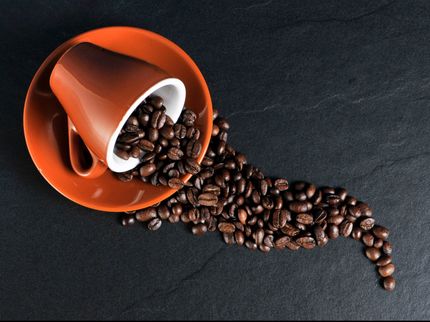Iced coffee accounts for one in five global coffee launches
Summer is just around the corner which means consumers across the globe will be reaching for cool, refreshing beverages. According to latest research from Mintel Global New Products Database (GNPD), cold coffee has drinkers buzzing, as around one in five (19%) global new coffee launches was iced, ready-to-drink (RTD) in 2017, up from 16% in 2015.

Bru-nO/ Pixabay
Chilled coffee is thriving in the US, growing at least 10% annually between 2013-17. In fact, more than half (56%) of new RTD coffee launches in the US were cold brew in 2017, up from 38% the year prior. What is more, in the US, cold brew sales at retail* reached an estimated $38 million in 2017, representing a single-year growth of 137%. Meanwhile, RTD coffee is also building momentum in China. Mintel forecasts annual growth of near an estimated 20% in the next five years as RTD steals more share from instant coffee.
Globally, Japan leads in RTD coffee innovation, accounting for 18% of all iced RTD coffee launches in 2017. The US follows, accounting for 13% of these launches in 2017, up from 10% in 2016.
But despite the rapid rate of growth of RTD elsewhere in the world, Europeans remain resistant to the lure of iced coffee. While Spanish consumers are most likely to have tried iced/chilled coffee in Europe, only 10% have actually purchased it either from a store or online. Meanwhile, in “coffee purist” countries like France and Italy, purchase of iced/chilled coffee among all adults is just 3% and 4%, respectively.
While Europe has been slower to follow the iced coffee boom, Mintel highlights strong potential among younger drinkers. Two-thirds (66%) of UK 18-24-year-old coffee drinkers say chilled coffee is a good alternative to sugary drinks, compared to a quarter (26%) of drinkers aged 45+. This echoes what is happening in America where younger drinkers, who are less ingrained in the ritual of drinking coffee hot, have driven RTD coffee growth. Some 68% of US 18-34-year-olds currently consume single-serve RTD coffee (in bottles or cans), compared to 43% of total US adults.
Jonny Forsyth, Associate Director, Mintel Food & Drink, said:
“Global investment in chilled, RTD coffee has increased as producers target a younger drinker who enjoys the format’s taste, refreshment and indulgence. RTD coffee is proving a better format for innovation than other hot-serve formats and, in 2017, manufacturers continued to push the format’s boundaries. Cold brew is helping to premiumise the RTD category, and is growing fast in the US, albeit less so in other markets. But while new product launches of iced coffee have reached record highs globally, in the US, cold brew has emerged as a vibrant growth segment of chilled coffee, and could prove to be the tipping point for take-up of cold coffee in Europe. The key to success lies with the younger generation which has been introduced to chilled coffee in branded coffee shops, which are growing quickly in Europe.”
US tops global coffee sales, but Nordics drink the most
After experiencing strong gains from 2012-15, the US coffee market slowed somewhat from 2016-17 as market penetration of single-cup coffee makers grew saturated. However, the US is still comfortably the world’s biggest market by volume, and is premiumising in response to the influence of the nation’s dynamic coffee shops market. Last year, US consumers bought 607,000 tonnes of coffee, followed by Brazil (425,000 tonnes), Germany (424,000 tonnes), Japan (304,000 tonnes), and finally Indonesia (268,000 tonnes). Meanwhile, in the UK sales of coffee stood at 63,000 tonnes, while in China sales reached 53,000 tonnes.
The US also leads the way in innovation, accounting for 11% of all global coffee launches in 2017, more than double the innovation of its nearest competitors Japan, France and the UK, each accounting for 5% of global coffee innovation.
While the US leads the way in volume sales, North European countries enjoy very high per capita consumption of coffee—especially in Finland, where consumers drank 7.91kg per person in 2017, and Norway, where they consumed 6.62kg.
The rise of super coffee
The rise of ‘super coffee’ reflects how third-wave coffee shops (and some retail brands) have increasingly pushed coffee with health benefits such as added coconut oil, chia seeds, protein and grass-fed butter.
Mintel highlights opportunities for coffee brands to target health-obsessed younger drinkers seeking added health benefits. In the US, one in six (17%) 18-34-year-old male coffee drinkers view added functionality (eg extra protein, added vitamins) as important when choosing which coffee to drink. While in Germany, 41% of 16-44-year-old coffee drinkers are interested in trying coffee with added protein versus 21% of drinkers aged 45+.
Finally, it seems coffee is following global consumers’ love affair with all things natural. In 2017, 10% of global coffee launches claimed to be organic, up from 8% in 2016. This rise was led by the US, where organic accounted for 22% of all coffee launches in 2017, up from 15% in 2016.
“Coffee with added protein is still a relatively unexplored area of global coffee innovation despite Starbucks targeting this space in the US market since 2015. Increasing attention to health and wellness among consumer globally will result in specific opportunities for coffee with added protein, as well as organic coffee, in the next two years. Europe has particular potential given rising interest in high protein diets and the popularity of milky coffee among younger adults.” Concluded Jonny.
*Estimated MULO sales




























































